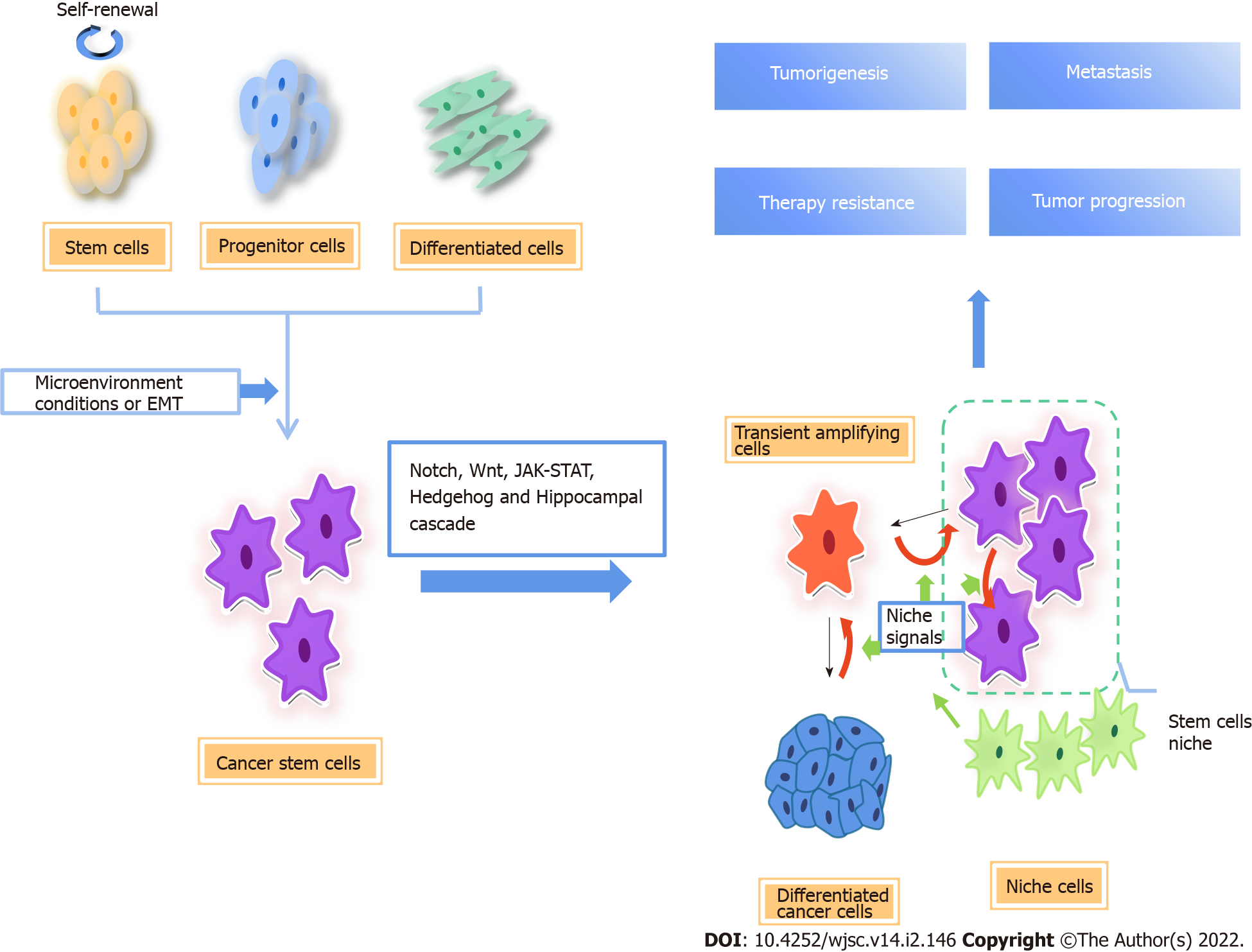Copyright
©The Author(s) 2022.
World J Stem Cells. Feb 26, 2022; 14(2): 146-162
Published online Feb 26, 2022. doi: 10.4252/wjsc.v14.i2.146
Published online Feb 26, 2022. doi: 10.4252/wjsc.v14.i2.146
Figure 1 Origin of cancer stem cells and regulatory pathways involved.
There are two possible origins of cancer stem cells (CSCs), one is normal stem cells/progenitor cells, and the other is fully differentiated cells. CSCs are closely related to tumor microenvironmental factors. In the process of epithelial-mesenchymal transformation, cancer cells acquire stem cell-like characteristics. The differentiation direction of CSC progeny is determined by niche signal, and the available niche space determines the number of progeny stem cells. When there is no space available in the niche, the stem cells divide into transient amplifying (TA) cells, which divide and differentiate rapidly. At the same time, niche cells reprogram TA cells and differentiated cells into CSCs by niche signals[7]. CSCs are important subsets of tumor cells, which are regulated by a variety of signal pathways, including Notch, Wnt/β-catenin, Hippo, and Hedgehog signaling, which are the main causes of cancer initiation, progression, metastasis, therapy resistance, and relapse. EMT: Epithelial-to-mesenchymal transition.
- Citation: Wang SY, Hu QC, Wu T, Xia J, Tao XA, Cheng B. Abnormal lipid synthesis as a therapeutic target for cancer stem cells. World J Stem Cells 2022; 14(2): 146-162
- URL: https://www.wjgnet.com/1948-0210/full/v14/i2/146.htm
- DOI: https://dx.doi.org/10.4252/wjsc.v14.i2.146









